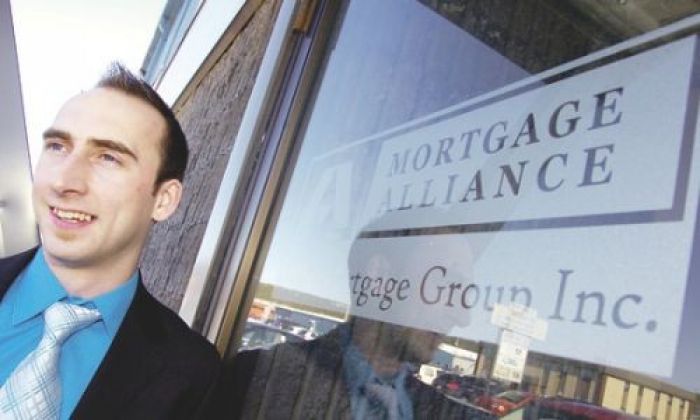
Becoming a home owner is one of the hallmarks of success in America. However, since the financial crisis in the late 2000s, this goal is harder to attain, and renting is becoming a viable alternative for many. But what about our northern neighbors? How have Canadians been affected by the meltdown?
Leslie Penney, Vice President of Business Development for Canadian-based APlus Mortgage Group, has been involved in many Canadian financing projects with all types of clients. He has worked with first-time home buyers, residential investors and more, and shared some interesting insights about the Canadian mortgage market.
What's the current market for hopeful Canadian homeowners?
In many urban areas like Vancouver and Toronto, home prices are going through the roof. This is leaving many hopeful homeowners on the sidelines. It’s hard to come up with the down payment on these high-priced homes, and many are remaining renters until price growth slows or prices drop off. In many cases, it’s causing urban sprawl and many bedroom communities are popping up in these large urban areas. It may not be as convenient for some as living in the hub of it all, but the space may be a little larger and the mortgages a bit smaller. Even in a smaller urban area, like here in St. John’s, Newfoundland, we are seeing many people moving a little further away from the city to get more space and slightly cheaper homes.
How does home financing differ in Canada than in the States? For example, can you secure a mortgage with 20 percent down like in the States?
Right now you can technically still get a home without a down payment in Canada. It’s called a cash-back mortgage, in which the lender gives the client 5 percent of the purchase price back in cash. This, in turn, is used as the down payment. Recently suggested changes by the Office of the Superintendent of Financial Institutions (OSFI) would eliminate this product from the market altogether.
Another financing option is the typical term. In the USA, many terms last 15 years or 30 years. However, the maximum term here in Canada is 10 years, the most common being the five year term.
In addition, when qualifying a client, there are discrepancies in what level of affordability one can support, guided by debt-to-income ratios. This is basically an equation for how much an applicant’s gross income goes towards servicing their debt. More aggressive loans in the US go as high as 65 percent, while here in Canada they max out at 44 percent. However, some uninsured lenders will allow a slightly higher ratio if they deem it justified.
What are some problems you encounter with first-time homebuyers?
Just like in the United States, the biggest issue is the down payment. Even with the cash-back option that I explained about earlier, the client is paying an interest rate premium and they would rather take the practical approach and save their money first.
An additional common problem is people’s credit score, mostly due to the lack of knowledge surrounding one’s credit and how it all works.
When it comes to debt-servicing, nowadays many clients have multiple credit cards and lines of credit, and I believe it’s due to how easily people are able to obtain these products from the banks.
What new trends have arisen in the Canadian mortgage industry the since the crisis in 2007-2008?
We have seen a massive wave of changes since the 2007-2008 subprime mortgage melt down. The most important changes are the falling of amortizations from 40 years to 30 years, the decrease of refinancing from 95 percent to 85 percent, and no more government insurance on Home Equity Lines of Credit (HELOC).
How are those changes affecting the home financing industry?
A lot of those changes are increasing the competition among both brokers and banks. This has the result of many mortgage professionals shifting gears on how they attract new clients and maintain current ones.
What changes or trends are likely to occur in the future for the Canadian mortgage industry?
Many people have the mindset that we’re in some sort of economic bubble and that what’s happening in the world won’t affect us. Sure, Canada’s prudent banking practices have kept us afloat during the crisis, but if we continue to accumulate debt at this pace we will crumble underfoot.
Is Canada taking steps to slow down its debt accumulation?
Yes. Just last week, the OSFI, which reports to the Finance Minister, suggested a slew of changes to the mortgage market to curb Canadians’ appetite for debt, primarily by way of mortgages. The list of suggested changes is open to public discussion until May 1. Some of the most important items include getting rid of the cash-back down payment, considering home insurance when calculating a client’s affordability and demanding more accountability from management of lending institutions.
Another area of concern for the regulators is the HELOC. In order to curb consumers’ appetite for this type of product, they are considering cutting the maximum loan-to-value of these from 80 percent to 65 percent. They are also suggesting that after about five years, the HELOC amount should then switch to a fixed-rate loan with an amortization period so that the loan actually gets paid off. The big issue with these products is that clients usually make the interest-only payment and they’ll be carrying this loan forever.
It’s evident that Canada’s mortgage underwriting criteria is more cautious than the US. However, since the economic collapse, the US has tightened up, introduced many new rules and eliminated many unhelpful practices. It’s not clear how these changes will ultimately affect the mortgage market. But we hope they will rev up global economic engines and bring new heights of prosperity to the United States, Canada and the world.
Alex Levin is a writer for JW Surety Bonds, a full service surety bond agency operating nationwide.














